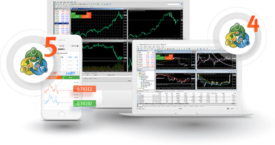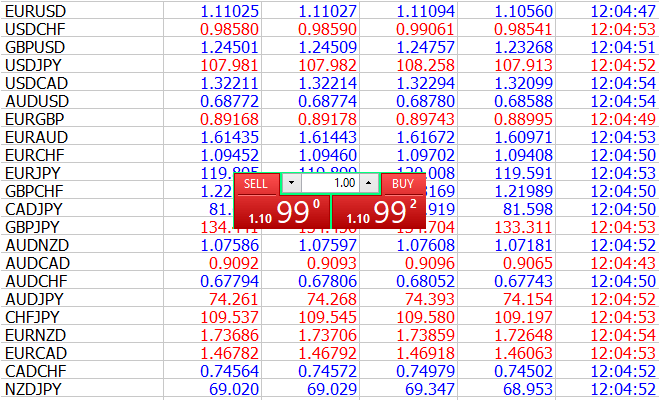Contents:

Both the upper resistance and lower support lines also converge as price moves lower in a narrowing range. With descending wedges, the upper and lower trendlines are drawn by connecting the lower highs and lower lows to form the familiar wedge shape. However, the confusion with the rising wedge pattern is that it is difficult to accurately determine whether it is a continuation or trend reversal. This makes rising wedges among the most reliable patterns in technical analysis but also among the most complicated trading strategies you can find in forex trading.

Spend some time simply scrolling through Forex charts and looking for wedge patterns. Draw the trend lines so you can be sure of what you have discovered. Save images of those that were particularly well-formed and generated great signals. An ascending triangle is a chart pattern used in technical analysis created by a horizontal and rising trendline. The pattern is considered a continuation pattern, with the breakout from the pattern typically occurring in the direction of the overall trend.
In the https://forexarena.net/ below, you can see how the rising wedge pattern looks in a bullish long trend. In this case, the market is still in a bullish bias and the ascending pattern simply indicates corrections in the trend. In the first chart below, there is a rising/descending wedge being formed after an uptrend. This means that the sellers are matching the buyers, squeezing the price into a tight range, so a reverse could be near.
The ability to read the market not only helps to survive in difficult situations but also to earn money with familiar patterns. Its effectiveness is high, but if you add VSA-analysis elements to your trading method, the result will be even better. The fighting between bulls and bears does not cease, and the ordinary trader needs to determine which of them dominates in order to take the side of the fittest. All information on The Forex Geek website is for educational purposes only and is not intended to provide financial advice. Any statements about profits or income, expressed or implied, do not represent a guarantee. Your actual trading may result in losses as no trading system is guaranteed.

Only single detail has attracted our attention – long white candle (we remember that it is called a Marubozu, right?). This looked like shift in https://forexaggregator.com/, but we didn’t have much confidence with that yet. During wedge forming time exhaust those participants that direction of wedge is. So, if wedge is down – hence sellers will exhaust and buyers will win, the same is true for up wedge. So, a Wedge pattern could be viewed in a couple of shapes – as a rising and as a falling one.
What is a Falling Wedge Pattern?
This forms the left shoulder, head, and right shoulder of the pattern. The neckline is drawn through the lows of the left shoulder and head. A reversal is confirmed when the market breaks below the neckline and moves to new lows. A trend channel is a set of parallel trend lines defined by the highs and lows of an asset’s price action.

The https://trading-market.org/ of the pattern itself is the same, but it could have different direction – upward or downward. To do this we take the range from the widest part of the wedge – this gives us an expected breakout range for the market to rise. The example above, it shows that these lines give us strong indications of the price rejection.
Wedge Pattern Trading
This information has been prepared by IG, a trading name of IG Markets Limited. IG accepts no responsibility for any use that may be made of these comments and for any consequences that result. No representation or warranty is given as to the accuracy or completeness of this information. Consequently any person acting on it does so entirely at their own risk. Any research provided does not have regard to the specific investment objectives, financial situation and needs of any specific person who may receive it. It has not been prepared in accordance with legal requirements designed to promote the independence of investment research and as such is considered to be a marketing communication.
- The breakout of the flag is our signal to join the trend and enter a trade.
- On higher timeframes like weekly or monthly charts, the Wedge may give stronger signals.
- The trade-in in this case had a very favorable risk-reward ratio since the limit was set at the previous swing low.
Simpler patterns include wedges and triangles, whereas more complex patterns include head and shoulders, rounded bottoms and tops, and double and triple tops/bottoms. Read our complete guide to stock chart patterns for more information. Our web-based trading platform allows traders to automatically scan for wedge patterns using our pattern recognition scanner. However, not all wedges highlighted may be ones you would trade. Use your discretion in assessing whether the price has contracted to form a wedge. When a falling wedge occurs in an overall downtrend, it signals slowing downside momentum.
Wedge
Let’s add another chart that shows rising reversal wedge – just to show what it looks like. I will not show you rising continuation wedge, because it very similar to falling. Hence, according to our rules, sellers should exhaust during the wedge and buyers will win – the up move should continue.
Canadian Dollar Outlook: USD/CAD Price Seeks Breakout Ahead of Canadian GDP – DailyFX
Canadian Dollar Outlook: USD/CAD Price Seeks Breakout Ahead of Canadian GDP.
Posted: Tue, 28 Feb 2023 08:56:06 GMT [source]
As the name indicates, a triangle is formed when the top and the bottom trend lines culminate in a single point, confining the price in between them. In a wedge, the price breaks out in either direction before the two trend lines meet. In the images below you can see a triangle and a wedge being formed. The next chart example shows an ascending wedge pattern that formed during a downtrend. Here also, the trendlines started to converge as price moved higher within a narrowing range towards the end of the pattern.
Support
Next, you’ll want to look for a faltering upward momentum around support and an eventual breakout from the wedge to the downside. Put 1% of your account balance in a short position when this happens. We have a separate guide that explains the principles of support and resistance if you don’t know what a support zone is.
A wedge is a price pattern marked by converging trend lines on a price chart. The two trend lines are drawn to connect the respective highs and lows of a price series over the course of 10 to 50 periods. The lines show that the highs and the lows are either rising or falling at differing rates, giving the appearance of a wedge as the lines approach a convergence. Wedge shaped trend lines are considered useful indicators of a potential reversal in price action by technical analysts. But currently it is better to treat wedges mostly as indecision patterns, although it more gravitates toward reversal nature than to continuation nature.
Graeme has help significant roles for both brokerages and technology platforms. In this graphic, the blue line represents the line of resistance for the price highs, while the orange line marks the line of resistance for price lows. Understanding markets gaps and slippageThe foreign exchange rate reveals valuable details about particular currencies a trader wishes to trade-in. One of the most popular trading markets in the world, the foreign exchange market allows investors to make quick money by trading currencies. How to Add MT4 IndicatorsMetaTrader 4 comes with several built-in and custom indicators to boost your trading strategy.

Let us assume that the same currency pair that picked up on an uptrend in the previous example continues to be in the uptrend for the next five months. The currency pair is currently trading at a price level of 3.2, which is very close to its resistance level of 3.5. Due to another economic announcement in favour of the Euro, the exchange rate starts rising even more as the market continues trending in an uptrend. Wedge patterns are known as trend reversal chart patterns and can signal either bullish or bearish reversals. The rising wedge is a bearish formation so traders will sell the market. The falling wedge is a bullish formation so traders will buy the market.
Like almost all chart patterns, there is the opposite of the rising wedge as well. Notice that the trajectory of the lows was not as strong as before, and then of course the highs were becoming as aggressive as well. The first thing that we need to do is identify what a wedge actually is. A wedge is simply two trendlines that converge towards an apex.
The broker is headquartered in New Zealand which explains why it has flown under the radar for a few years but it is a great broker that is now building a global following. The BlackBull Markets site is intuitive and easy to use, making it an ideal choice for beginners. Usually happens within an uptrend, whether a long-term or short-term one, when the pressure from the sellers starts to catch up to the buyers. CEO Valutrades Limited, Graeme Watkins is an FX and CFD market veteran with more than 10 years experience. Key roles include management, senior systems and controls, sales, project management and operations.
If the market is in a downtrend, you should look for a bearish wedge pattern to form below the 30 level on the RSI. And if the market is in an uptrend, you should look for a bullish wedge pattern to form above the 70 level on the RSI. One huge mistake that a lot of traders make is that they get concerned when a trade does not go in their direction or hit their target right away. Remember though, time and price are two totally different things and even if you do have a trade workout, it will work out on whatever the market schedule is, not yours.
Then, whenever you identify a rising wedge pattern near one of the Fibonacci levels, you can take it as a strong indication for reversal rather than correction. The rising wedge chart pattern is a recognisable price move that’s formed when a market consolidates between two converging support and resistance lines. To form a rising wedge, the support and resistance lines both have to point in an upwards direction and the support line has to be steeper than resistance. Our final trade example shows an ascending wedge pattern that appeared on a four-hour timeframe, right at the end of a bullish trend. This is another great example of how momentum declined on the MACD indicator during the wedge formation before price broke the support line and a strong reversal followed.
As you draw the two trendlines, you can see that a wedge is most certainly forming. Beyond that, we reached the blue line which represents the top of the wedge almost immediately on the breakout. The stop loss would have been on the other side of the wedge, which also would have been supported by the hammer that made up the last candle of the wedge before the breakout. If you look forward several days, you can see that the same area offered support on a pullback at least twice. This is quite common when it comes to market patterns, as it is a phenomenon known as “market memory”, which is where support becomes resistance in vice versa.



